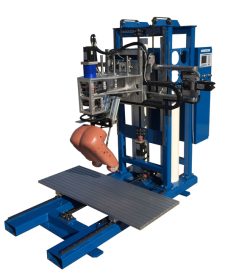
Simulated human body in and out seat test system
The simulated human body in and out seat test bench/simulated human body in and out seat test system adopts pneumatic servo control method for load, displacement, and angle testing, used for durability testing of car seat bumps and creep.
Main features:
1. The interface adopts virtual instrument technology.
2. Convenient setting of experimental parameters.
3. It can print data results in real time.
4. The load and displacement calibration method is simple and easy to operate.
5. The measurement and control system adopts a template design, which is easy to maintain.
6. It has overload protection and software setting protection.
Simulation test:
1. Prepare a pressure head for a 3D dummy model, which is 50% dummy according to SAE J826-2002. The indenter is covered with a layer of 12mm foam and denim, and appropriate weights are allocated to the indenter to keep the weight of the indenter at 44.5KG,
2. Fix the seat assembly on the simulated human body entry and exit test bench, adjust the seat to the designed position, and simulate the operation program of the international robot for human body entry and exit:
① Slide the pressure head horizontally into the seat and insert it into the cushion edge and backrest edge by about 25mm each. Rotate the pressure head 30 degrees to allow the inner side of the rear of the pressure head to enter first;
② Continue to enter the indenter until the centerline of the indenter aligns with the centerline of the seat;
③ Squeeze the pressure head to make it stable inside the seat;
④ Insert the pressure head into the seat until the load reaches 445N;
⑤ The pressure head is about 30 degrees, with a 445N load creeping the backrest;
⑥ The pressure head stays on the seat with a load of 445N until it is halfway removed from the seat;
⑦ Once the pressure head is moved halfway out of the seat, it slides along with the side wings of the seat cushion. When the pressure head is moved out, the side wings of the seat have a significant depression.
3. Experimental frequency: 4.5 times/min;
4. Experiment frequency: 15000 simulated human body entry and exit experiments.
Prev: White body stiffness test bench
Next: Multi angle glossmeter